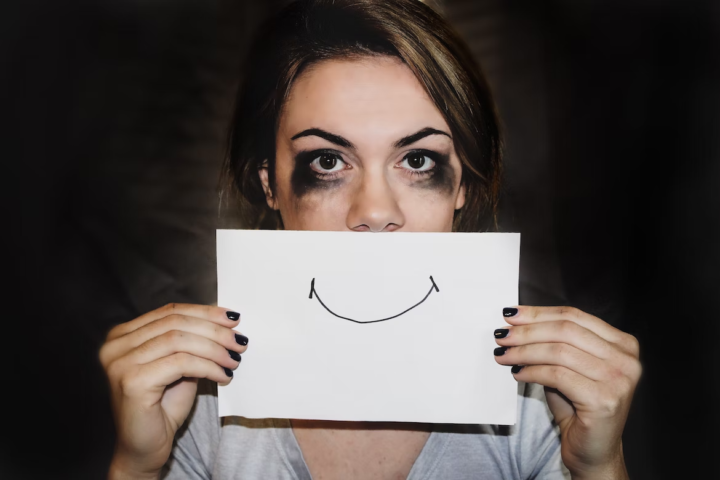What Is Ketamine and How Can It Help With Depression?
Standard antidepressants are effective for many people, but not everyone. There is no wholesome approach to treating depression. Some people with depression respond well to the first medicine they try, while others may try numerous medications over the years with no improvement.
Treatment-resistant depression occurs when an individual takes two or more antidepressants from different classes and still feels depressed four to six weeks after reaching the target dose. One surprising new treatment for TRD is ketamine, which can alleviate symptoms in a few hours.

What is Ketamine?
Ketamine is a dissociative anesthetic. It is used to induce general anesthesia for non-muscle relaxing medical operations. Dissociative refers to the effect of being in a state similar to sleep, as with general anesthesia. Ketamine is not dissimilar from other drugs Inducing hallucinations, like Lysergic acid diethylamide and phencyclidine angel dust. Sounds and images may seem distorted or even nonexistent during hallucinations.
How Does Ketamine Work On Depression?
Some people who take ketamine for depression don’t have the normal drug trip, but they nevertheless feel better within a few days. One of ketamine’s side effects is dissociation. However, this isn’t the point of the treatment. To get the treatment, you have to go through it. The effectiveness of the ketamine treatment depends on how your brain responds to the drug.
Based on its current state, the brain can react in various ways. Some patients with long-term depression, for instance, have a reduction in the synapses that usually allow nerve cells to talk to one another.
Depression is so severe that it causes genuine synaptic pruning or loss, resulting in decreased synapses. A single dose of ketamine administered under mydenvertherapy.com supervision can begin to restore damaged connections within 24 hours. Ketamine’s mood-lifting effects improve with increased synaptic plasticity.
Diverse Brain Effects
Ketamine may have additional cognitive effects. Glutamate is a chemical neurotransmitter used by some neurons in the brain associated with mood to communicate with one another. Glutamate receptors, which act like catchers’ mitts for glutamate, are required for the nerve cells to participate in this interaction.
Some depressed people’s brains have a decreased response to glutamate, meaning that the neurotransmitter no longer stimulates the appropriate cells. The glutamate receptors in the catcher’s mitts have been turned off or diminished. However, after patients with this condition are given ketamine, new glutamate receptors are added to the synapses between nerve cells.
To use an analogy, ketamine acts like a pair of catcher’s mitts, allowing glutamate to elicit a response from nerve cells once again. However, despite ketamine’s primary activity in glutamate receptors, its antidepressant effects require the cooperation of opioid receptors.
Ketamine’s effects can be traced back to the opiate system. Like with opiate medications, tolerance to ketamine’s effects may develop with time, necessitating ever-increasing dosages to achieve the desired result.
This threat can be mitigated by gradually increasing and decreasing the medicine dosage over time. It’s natural to worry about potential addiction whenever opioids are mentioned. Possibly less addictive than opioids, but still not without dangers.
The potential advantages may not be worth the danger of addiction or tolerance because it is an off-label medication. Some experts believe those with a history of substance misuse should not use it. Addiction patients are often excluded from clinical trials. People with schizophrenia may also be at risk. Ketamine temporarily exacerbates their psychotic symptoms when given at the antidepressant dose.
Transforming The Mind
The drug’s effect on glutamate receptors suggests it could treat depression by stimulating the growth and activation of dormant synapses. Perhaps that’s why some people find relief from depression with ketamine when nothing else works. Some people report better sleep after only four infusions of their full therapy amount. One of the most prevalent signs of depression is difficulty sleeping.
Benefits
The total time required to deliver a course of ketamine infusion therapy only takes minutes. Unlike anesthesia, the dose to treat depression is quite low, and patients are closely monitored for two hours after each session. One of ketamine’s most appealing features as a depression treatment is how soon it begins to take effect.
Ketamine can begin to provide relief as soon as an hour after the first session, while other antidepressant medicines can take weeks or even months to start working. Although studies on ketamine’s efficacy in treating depression are still in their infancy, some of the possible mechanisms of action being investigated include the following:
- Prompts frontal lobe development
- Boosts the brain’s ability to generate new connections or synapses
- Modulates anti-inflammatory signaling pathways
- Coordination between circuits is restored.
- Aids in the flow of information between various brain regions
A small but vocal minority of patients and doctors strongly prefer intravenous IV over intranasal dosing. A clear winner or clear beneficiaries cannot be determined due to a lack of conclusive evidence. Some patients won’t complete their prescribed regimens because they lack financial resources or medical coverage. However, ketamine is effective for depression treatment.


